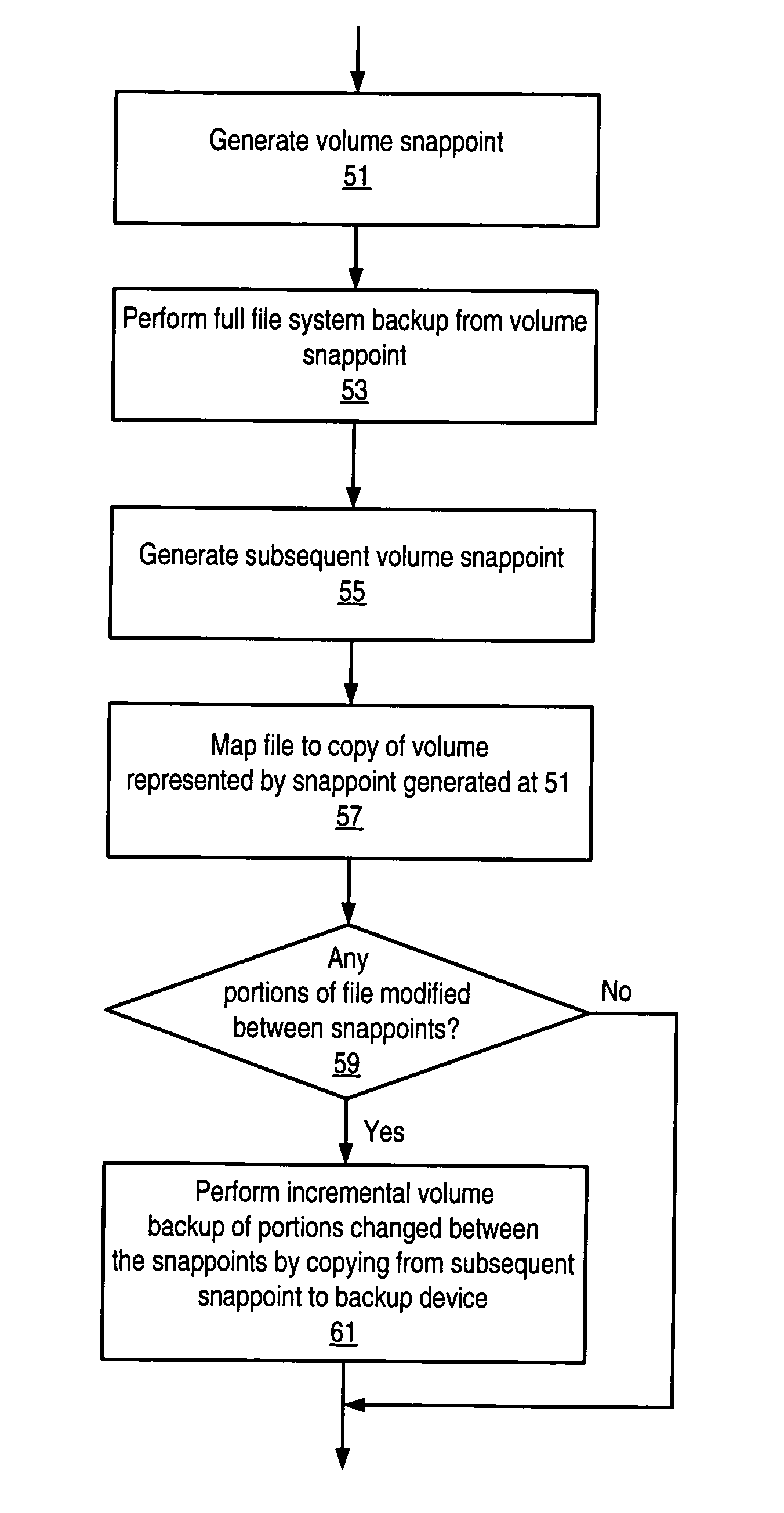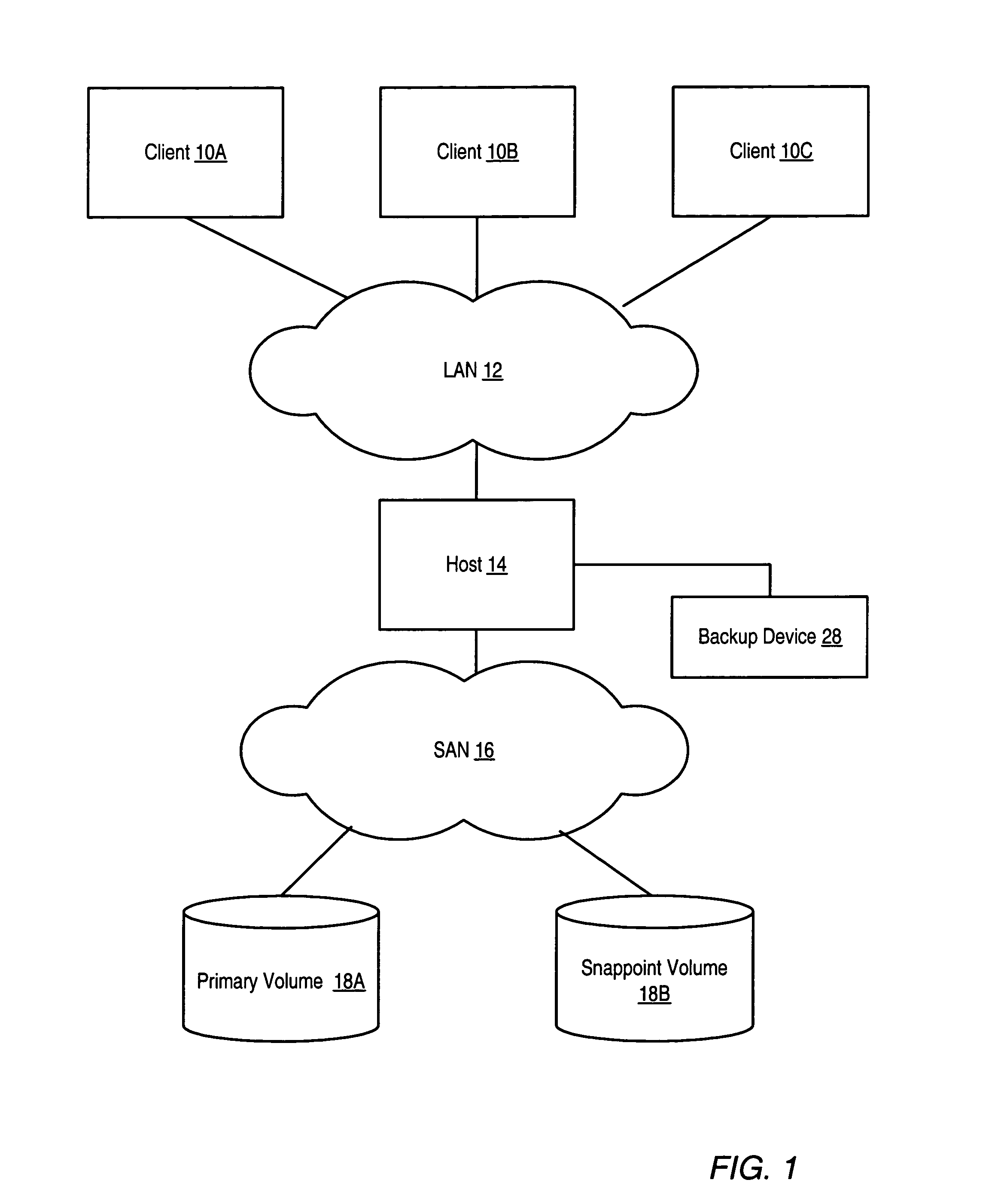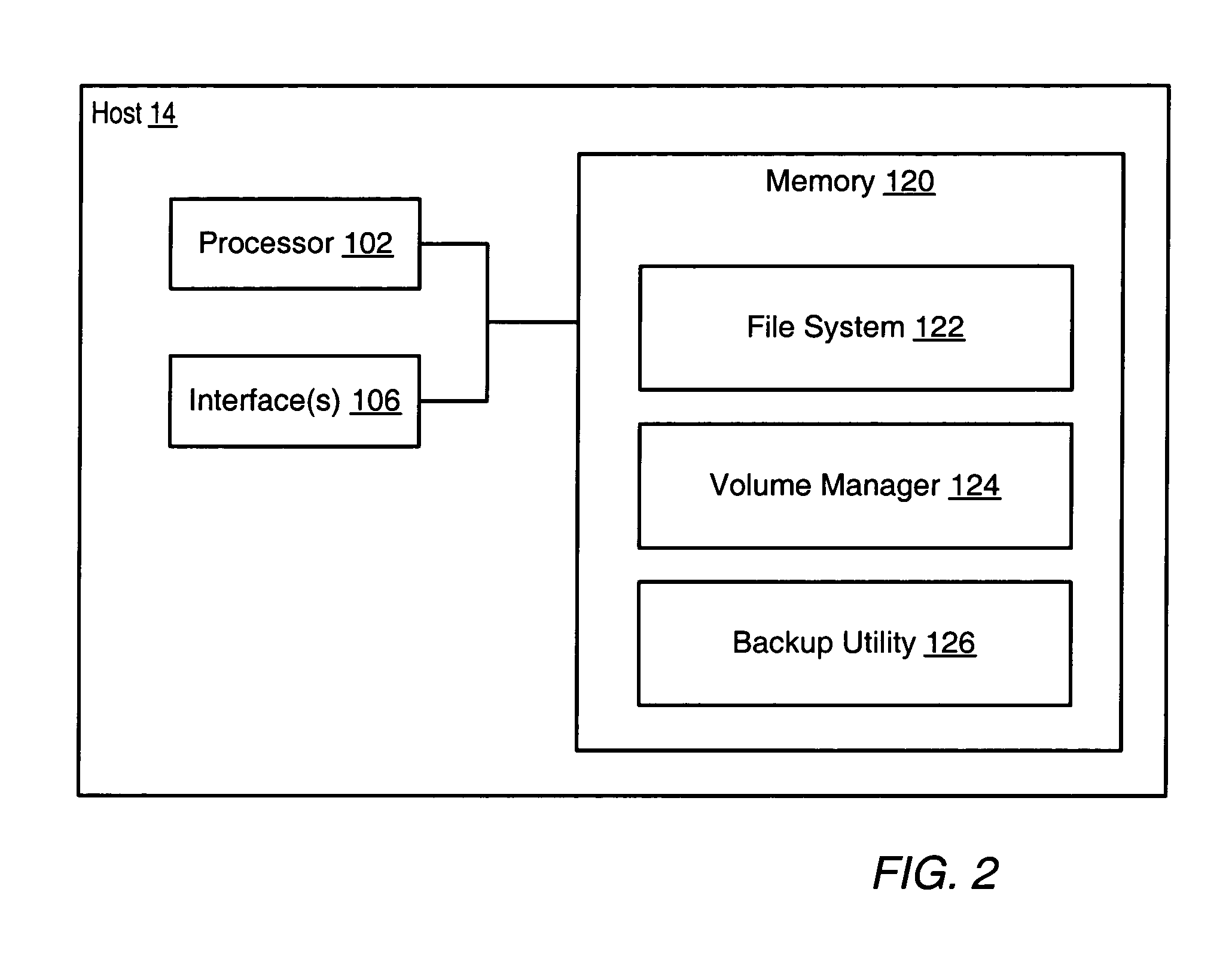Volume-based incremental backup and recovery of files
a file recovery and incremental backup technology, applied in the field of storage systems, can solve the problems of reducing the performance of the file system for the duration of the backup, affecting the performance of the file system, and affecting the location of files
- Summary
- Abstract
- Description
- Claims
- Application Information
AI Technical Summary
Benefits of technology
Problems solved by technology
Method used
Image
Examples
Embodiment Construction
[0019]FIG. 1 illustrates an exemplary system that may implement volume-based incremental backups and recovery of files. As shown, such a system may include several storage volumes 18A-18B, a SAN (Storage Area Network) 16, one or more hosts (which may also be referred to as servers) 14, a LAN (Local Area Network) 12, a backup device 28, and / or several client devices 10A-10B. Note that other embodiments may include fewer or additional components. Throughout this disclosure, drawing elements identified by the same numeral followed by a unique alphabetic identifier (e.g., storage volumes 18A and 18B) may be collectively referred to by that numeral alone (e.g., storage volumes 18).
[0020]Snappoint volume 18B may be used to store one or more snappoints of primary volume 18A. Each snappoint represents a point-in-time copy of the primary volume 18A.
[0021]Storage volumes 18A-18B are logical volumes that may be implemented using various physical storage media. Each storage volume 18 may be imp...
PUM
 Login to View More
Login to View More Abstract
Description
Claims
Application Information
 Login to View More
Login to View More - R&D
- Intellectual Property
- Life Sciences
- Materials
- Tech Scout
- Unparalleled Data Quality
- Higher Quality Content
- 60% Fewer Hallucinations
Browse by: Latest US Patents, China's latest patents, Technical Efficacy Thesaurus, Application Domain, Technology Topic, Popular Technical Reports.
© 2025 PatSnap. All rights reserved.Legal|Privacy policy|Modern Slavery Act Transparency Statement|Sitemap|About US| Contact US: help@patsnap.com



